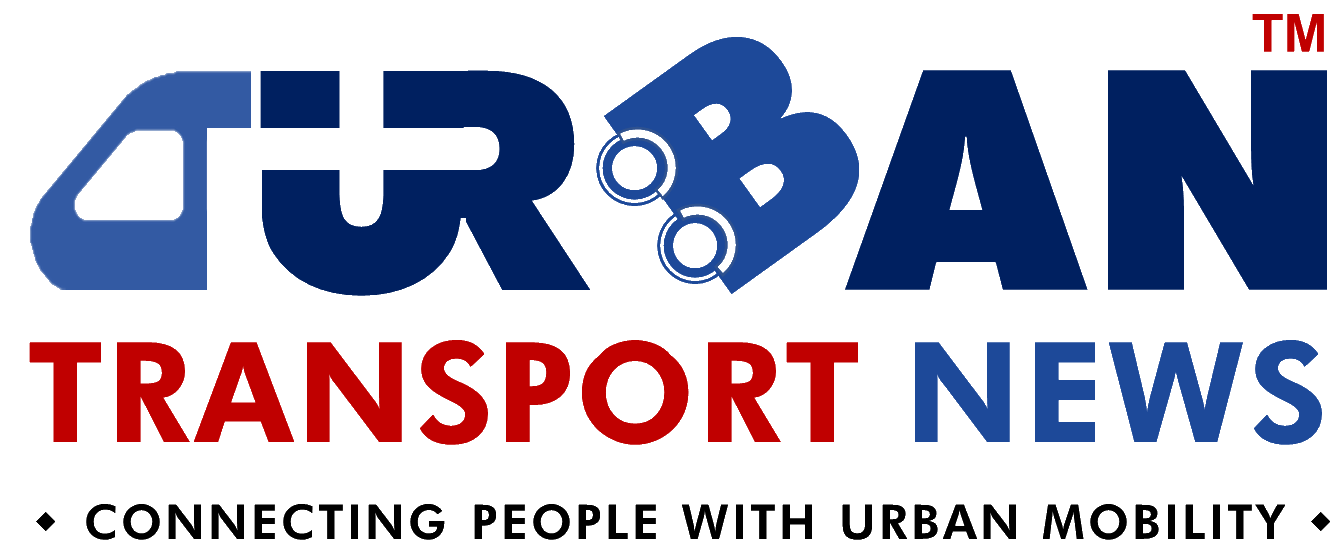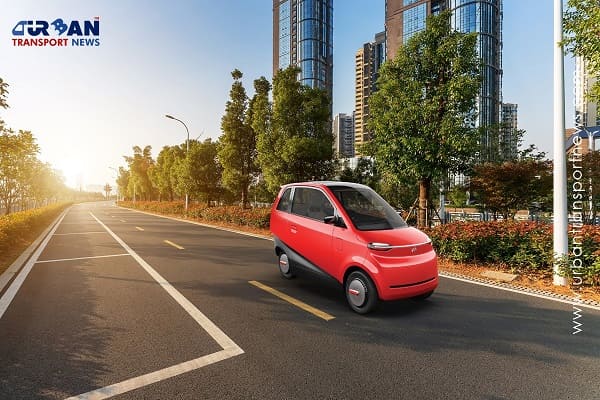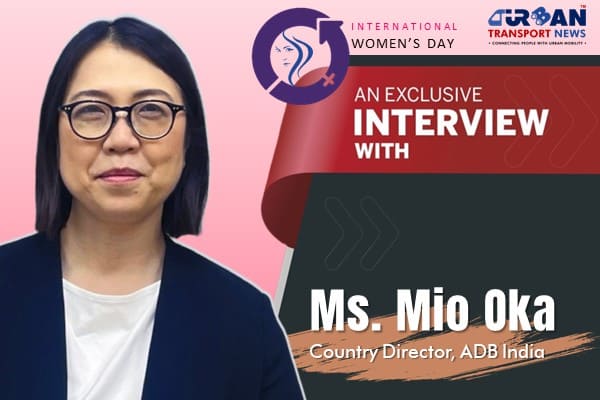SATEBA acquires Rail Business of De Bonte Group in Belgium
 Regent to launch High-Speed Seagliders to transform coastal transportation in UAE
Regent to launch High-Speed Seagliders to transform coastal transportation in UAE California commences construction on $12bn Los Angeles - Vegas High Speed Rail Project
California commences construction on $12bn Los Angeles - Vegas High Speed Rail Project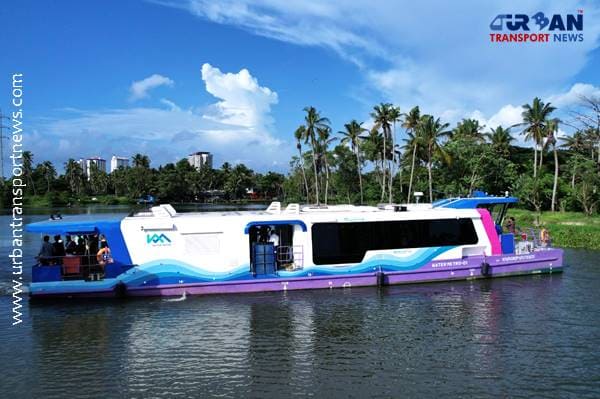 Kochi Water Metro floats tender to procure 15 more electric-hybrid ferries
Kochi Water Metro floats tender to procure 15 more electric-hybrid ferries Siemens Mobility-Hassan Allam Construction JV Sign Contract for UAE – Oman Railway Link
Siemens Mobility-Hassan Allam Construction JV Sign Contract for UAE – Oman Railway Link What is better public transport option for Bengaluru - RRTS or Metro Expansion?
What is better public transport option for Bengaluru - RRTS or Metro Expansion?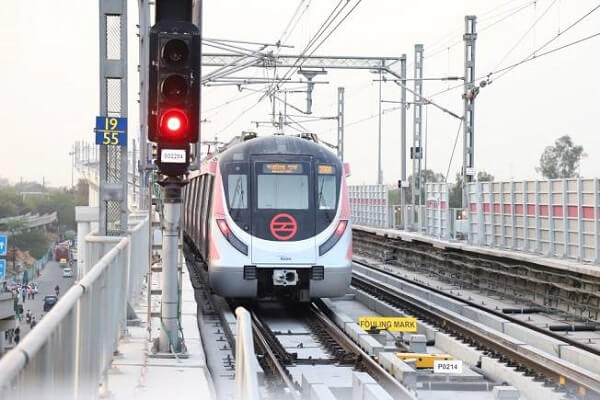 Behind Closed Doors: Corruption Uncovered in Delhi Metro's Top Management
Behind Closed Doors: Corruption Uncovered in Delhi Metro's Top Management IndiGo to launch Urban Electric Air Taxis between Delhi to Gurugram
IndiGo to launch Urban Electric Air Taxis between Delhi to Gurugram Swisspod secures Strategic Investment to advance the Hyperloop Transportation
Swisspod secures Strategic Investment to advance the Hyperloop Transportation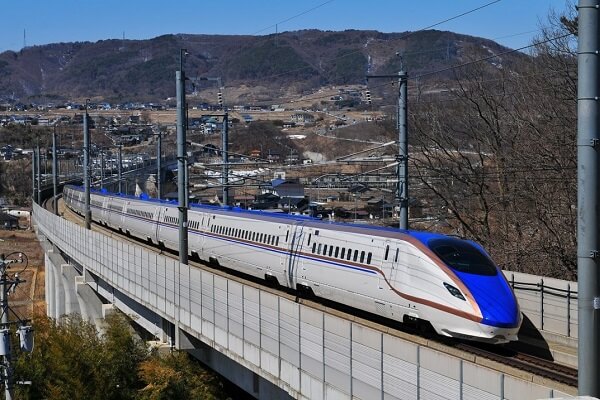 Siemens Mobility revolutionizes Copenhagen's S-bane Network with Driverless Technology
Siemens Mobility revolutionizes Copenhagen's S-bane Network with Driverless Technology
Empowering She-Mobiles: Pioneering Women in India's Transit Revolution

In the dynamic landscape of India's public transit, a silent yet powerful revolution is unfolding, driven by the determination and resilience of pioneering women. As the nation grapples with the complexities of urban mobility, these trailblazers are carving out a new narrative—one that defies stereotypes and challenges long-standing norms. "Empowering She-Mobiles" is an exploration into the remarkable journey of women who are not just passengers, but architects of change in India's transit revolution. From steering buses through congested streets to engineering innovative solutions, their stories embody the spirit of progress and inclusivity that is reshaping the future of public transportation. Join us on a journey as we uncover the untold stories of courage, leadership, and empowerment that are propelling India towards a more equitable and sustainable transit future.
Obstacles on the Road to Empowerment: Challenges Faced by Women in India's Transportation Sector
There are several challenges that women face as they strive to contribute to and lead in the transportation sector. These challenges can encompass various aspects are detailed below:
- Societal Expectations: Traditional gender roles and societal norms often dictate that certain professions, particularly those involving manual labour or perceived as "male-dominated," are not suitable for women. This mindset can create significant barriers for women who aspire to pursue careers in roles such as bus driving, where they may encounter resistance or scepticism from family members, peers, and society at large.
- Safety Concerns: Public transit can be associated with safety risks, especially for women working in roles that require them to interact directly with passengers or operate vehicles late at night. Concerns about personal safety and the potential for harassment or assault may deter women from pursuing careers in public transportation or contribute to a hostile work environment if not adequately addressed by employers.
- Workplace Culture: The transportation industry has historically been male-dominated, which can result in a workplace culture that is unwelcoming or hostile towards women. Women may face discrimination, harassment, or lack of support from colleagues and superiors, which can negatively impact their job satisfaction, performance, and overall well-being.
- Training and Opportunities: Access to training, education, and career advancement opportunities can be limited for women in the transportation sector, particularly in roles requiring specialized skills or qualifications. Discrimination or bias in recruitment, promotion, and training programs may hinder women's ability to progress in their careers and assume leadership positions within transportation organizations.
- Work-Life Balance: Balancing work responsibilities with caregiving duties and family commitments can pose significant challenges for women in the transportation industry, particularly for those working irregular or long hours. Limited access to affordable childcare, flexible working arrangements and supportive policies can exacerbate the struggle to maintain a healthy work-life balance.
Tackling these obstacles demands collaborative action from policymakers, transportation authorities, employers, and society at large to foster an environment that prioritizes inclusivity, support, and gender equity within the transportation sector. Implementing initiatives like gender-sensitive recruitment practices, comprehensive training programs, workplace diversity and inclusion policies, and tailored support services can play a pivotal role in empowering women to surmount challenges and emerge as leaders in India's public transit transformation.
Empowering “She-Mobiles”: Key Strategies for Inclusive Transportation
This sub-title delineates fundamental methods to actively engage women and ensure their benefits from public transportation systems. Here's an explanation of each strategy
- Conducting Research on Mobility Patterns and Needs: This strategy involves gathering data and insights into how women utilize transportation services. Understanding their mobility patterns, such as preferred routes, timings, and trip purposes, helps transportation planners tailor services to meet their specific needs effectively.
- Designing and Implementing Inclusive Mobility Services: Building on the research findings, this strategy focuses on creating transportation services that cater to the diverse needs of women. This includes providing accessible infrastructure, considering safety concerns, offering flexible scheduling options, and ensuring affordability to enhance the overall accessibility and usability of public transit for women.
- Ensuring Safety Through Comprehensive Security Measures: Women often face safety risks while using public transportation, including harassment and violence. Implementing comprehensive security measures such as increased surveillance, well-lit stations, emergency assistance buttons, and robust law enforcement presence can help mitigate these risks and create a safer environment for women to travel freely.
- Fostering Women's Empowerment within the Transportation Sector: This strategy aims to promote gender diversity and empower women to actively participate in various roles within the transportation sector. Providing training, mentorship, and career advancement opportunities, as well as addressing gender biases and barriers to entry, can help women thrive as drivers, engineers, planners, and leaders in the industry.
- Raising Awareness and Promoting Gender Equality: Educational campaigns and awareness initiatives play a crucial role in challenging gender stereotypes, promoting gender equality, and encouraging behavioral changes that foster inclusivity in public transportation. By highlighting the importance of women's participation and addressing societal norms and attitudes, these campaigns aim to create a culture of respect, equality, and inclusivity within the transportation sector and society at large.
The action points for the above key Strategies are given below:-
Conducting Research on Mobility Patterns and Needs:
- Gather sex-disaggregated data to analyse female travel patterns effectively.
- Incorporate data on informal transport, walking, and cycling into transportation surveys.
- Integrate targeted inquiries about short, non-work-related trips and caregiving mobility into survey questionnaires.
- Undertake gender impact assessments by involving local women's groups and organized civil society, viewing the city from a female perspective.
- Ensure the active participation of women throughout the planning and policy process, including consultation, monitoring, and evaluation stages.
Designing and Implementing Inclusive Mobility Services
- Take into account women's travel patterns when planning routes and addressing last-mile connectivity in public transport and shared mobility.
- Create pedestrian-friendly street networks with wide sidewalks, ample crossings, and clear street signals.
- Enhance the appeal of cycling for women by implementing safe infrastructure and fostering cultural acceptance.
- Implement fare integration within the public transport system to facilitate seamless trip chaining.
- Guarantee barrier-free access to public transport by eliminating steps and providing level boarding options.
- Install clean toilets and nursing rooms in heavily trafficked public transport stations to cater to the needs of women and caregivers.
Ensuring Safety Through Comprehensive Security Measures
- Acknowledge sexual harassment and gender-based violence as criminal offenses and establish reliable reporting mechanisms.
- Plan open public areas at stations with enhanced visibility, lighting, and CCTV systems.
- Train public transport staff to effectively address incidents of sexual harassment.
- Ensure a higher presence of staff, including gender-diverse teams, at stations and on vehicles.
- Assess the necessity for women and children-only services in both public transport and ride-hailing offerings.
- Disseminate information on public transport schedules to minimize waiting times.
- Implement "on-demand bus stop" services during night and early morning hours to reduce walking distances.
- Include security requirements in tendering documents and incorporate bonus-penalty clauses in contracts with operators.
Fostering Women's Empowerment within the Public Transit Sector
- Cultivate a work culture that is responsive to gender dynamics and actively challenges gender stereotypes within the transport sector.
- Lower barriers to entry for women seeking employment across all levels, including roles as drivers, planners, managers, entrepreneurs, and decision-makers.
- Recruit and retain female drivers and mechanics by offering favourable working conditions and appropriate facilities.
- Implement policies that ensure parity representation of women in participatory and decision-making bodies within the transportation industry.
- Showcase women leaders in the transport sector as exemplary role models to inspire and encourage others.
Raising Awareness and Promoting Gender Equality
- Employ campaigns and social media initiatives to promote a "zero tolerance" culture against harassment and misconduct directed at women.
- Implement educational programs in schools focused on gender roles and promoting safe mobility practices.
- Integrate gender perspectives into university curricula for transport planning and engineering courses.
- Provide training for government officials to incorporate gender considerations into mobility planning processes.
- Utilize gender-balanced public signage and employ language that is sensitive to gender diversity.
- Collaborate with men in awareness-raising efforts to address gender-based issues in transportation.
- Take initiative and responsibility for implementing gender-responsive measures in your community.
Ultimately, empowering women in the transportation sector requires a multifaceted approach that addresses not only physical infrastructure but also social and cultural norms. By embracing diversity, challenging stereotypes, and actively involving women in decision-making processes, we can build transportation systems that are truly inclusive, safe, and accessible for all.
Engineering the Future: Innovations in India's Transit Landscape
In the rapidly evolving landscape of India's transportation sector, women are emerging as key architects of change, reshaping the future of mobility through innovation and ingenuity. It explores the pivotal role of female engineers in driving forward the country's transit infrastructure and technology. "Engineering the Future" delves into the groundbreaking contributions of women in designing smarter, safer, and more efficient transit systems. From developing cutting-edge technologies to reimagining urban infrastructure, these visionary engineers are at the forefront of India's transit revolution. Through their expertise and creativity, female engineers are addressing longstanding challenges in the transportation sector, such as improving accessibility, reducing environmental impact, and enhancing passenger experience. Their innovative solutions are not only transforming the way people move within cities but also laying the foundation for more sustainable and equitable transportation networks. Moreover, it highlights the importance of diversity in engineering teams, emphasizing the unique perspectives and insights that women bring to the table. By fostering inclusive work environments and promoting gender diversity in STEM fields, India's transit sector is tapping into a wealth of talent and driving innovation to new heights. We showcase the stories and achievements of pioneering female engineers who are breaking barriers and pushing the boundaries of what is possible in transportation engineering. Their unwavering commitment to excellence and their passion for creating positive change are driving India's transit sector towards a brighter and more inclusive future. "Engineering the Future" celebrates the transformative impact of women in shaping the trajectory of India's transit revolution, inspiring future generations of engineers and innovators to continue pushing the boundaries of possibility in pursuit of a more sustainable, accessible, and equitable transportation system for all.
Ensuring Safety and Accessibility: A Cornerstone of India's Transit Revolution
Amid India's transit revolution, ensuring safety and accessibility emerges as a fundamental priority, particularly for the empowerment of women navigating the urban landscape. This pivotal aspect of our article underscores the imperative to create transportation systems that prioritize the well-being and inclusivity of all passengers. It delves into the multifaceted strategies and initiatives aimed at enhancing safety and accessibility within India's public transit network. From implementing comprehensive security measures to improving infrastructure to cater to diverse mobility needs, the focus is on fostering an environment where women feel empowered and secure while utilizing transportation services. Safety measures encompass a wide spectrum, ranging from enhanced lighting and surveillance systems at stations to the deployment of gender-sensitive public signage and language. By acknowledging and addressing the prevalence of sexual harassment and gender-based violence, transportation authorities are taking proactive steps to create safer spaces for women to travel without fear or apprehension. Additionally, ensuring accessibility goes beyond physical infrastructure to encompass equitable access to transportation services for individuals of all abilities. This involves eliminating barriers such as steps and providing level boarding options to facilitate seamless mobility for everyone, including women with disabilities or caregivers traveling with young children. Moreover, initiatives such as on-demand bus stops during night hours and clean, well-maintained facilities at transit stations cater to the specific needs of women, ensuring that their journey is not only safe but also comfortable and dignified. Through the lens of safety and accessibility, "Empowering She-Mobiles" advocates for a paradigm shift in transportation planning and policy-making—one that places the needs and concerns of women at the forefront. By prioritizing safety and accessibility, India's transit revolution becomes more than just a means of getting from point A to point B; it becomes a catalyst for social empowerment, gender equality, and inclusive urban development. It serves as a beacon of hope and progress within India's transit revolution, promising a future where women can navigate the urban landscape with confidence, dignity, and autonomy.
Empowering Communities: Mobilizing Change in India's Transit Revolution
Amid India's transit revolution, the empowerment of communities emerges as a driving force behind transformative change, particularly in the realm of public transportation. It illuminates the pivotal role of community engagement in reshaping the landscape of mobility. "Empowering Communities" delves into the collaborative efforts between residents, advocacy groups, and transportation authorities to foster inclusive and sustainable transit solutions. By harnessing the collective wisdom and resources of communities, these initiatives aim to address longstanding challenges and amplify the voices of marginalized groups, including women. At the heart of community empowerment lies a commitment to democratizing decision-making processes and ensuring that transportation policies and infrastructure projects reflect the diverse needs and priorities of residents. Through participatory planning approaches and grassroots advocacy efforts, communities are reclaiming ownership of their transit networks and driving forward progressive change. Moreover, "Empowering Communities" highlights the critical role of women as agents of change within their communities. By actively engaging women in transportation planning, advocacy, and leadership roles, these initiatives not only amplify their voices but also catalyse broader societal transformations towards gender equality and social inclusion. From grassroots initiatives focused on improving pedestrian safety to community-led campaigns advocating for accessible public transportation, the empowerment of communities is paving the way for a more equitable and people-centric transit system in India. By fostering collaboration, dialogue, and shared ownership, these efforts are breaking down barriers and building bridges towards a future where mobility is a fundamental right for all. "Empowering Communities" celebrates the resilience, creativity, and collective action of communities across India who are driving forward the transit revolution. By empowering communities to shape their transportation destinies, we are forging a path towards a more just, sustainable, and inclusive future for all members of society.
Key Takeaways
Women Driving Change: Women are playing a pivotal role in reshaping India's transit landscape, from assuming roles as bus drivers to leading innovations in transit infrastructure and technology. Their presence is challenging traditional gender norms and driving forward a more inclusive and equitable transportation sector.
- Safety and Accessibility: Ensuring the safety and accessibility of public transportation is paramount for empowering women as active participants in mobility. Initiatives aimed at enhancing security measures, improving infrastructure, and fostering inclusive environments are essential for creating a transit system that serves the needs of all passengers.
- Community Engagement: The involvement of communities, particularly women, is a catalyst for transformative change in India's transit revolution. Through grassroots advocacy, participatory planning, and collaborative efforts, communities are reclaiming ownership of their transit networks and driving forward progressive solutions that reflect their diverse needs and priorities.
- Diversity and Inclusion: Embracing diversity and promoting gender equality within the transportation sector is essential for driving innovation and progress. By fostering inclusive work environments, promoting gender diversity in STEM fields, and amplifying the voices of women in decision-making processes, India's transit sector can tap into a wealth of talent and drive forward transformative change.
- Future Outlook: The empowerment of women in India's transit revolution holds the promise of a more sustainable, accessible and equitable transportation system for all. By continuing to champion the role of women as leaders, innovators, and advocates within the transportation sector, India can pave the way for a brighter and more inclusive future in mobility.
Conclusion: Driving Forward a More Inclusive Transit Future
It becomes evident that women are not just passengers in the journey towards a more inclusive and equitable transportation system—they are the drivers of change, the architects of innovation, and the champions of progress. As we reflect on the stories of women breaking barriers as bus drivers, leading innovations in transit technology, and advocating for safer and more accessible transportation, it becomes clear that their contributions are not only reshaping the transit landscape but also reshaping societal norms and expectations. Through their resilience, creativity, and unwavering determination, women are challenging traditional gender roles, dismantling barriers to entry, and paving the way for a future where mobility is a fundamental right for all members of society, regardless of gender. However, our journey towards a more inclusive transit future is far from over. It requires continued commitment from policymakers, transportation authorities, employers, and communities to create environments that are inclusive, supportive, and equitable for women in the transportation sector. It necessitates ongoing efforts to enhance safety and accessibility, promote diversity and inclusion, and empower communities to shape their transportation destinies. By amplifying the voices of women, championing their leadership, and celebrating their contributions, we can drive forward a transit revolution that truly serves the needs of all passengers. "Empowering She-Mobiles" serves as a call to action—a call to recognize the transformative potential of women in shaping the future of transportation and to commit to creating a transit system that is not only efficient and sustainable but also inclusive and empowering for all. As we continue on this journey, let us remember the words of these pioneering women and strive to build a future where mobility knows no bounds and where every woman can navigate the urban landscape with dignity, safety, and autonomy.
